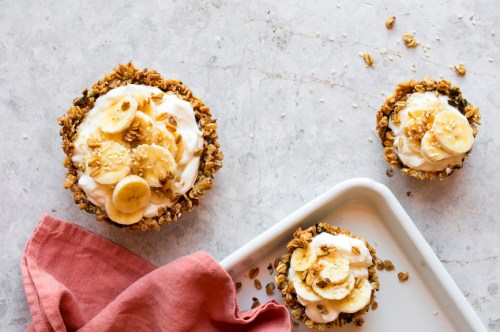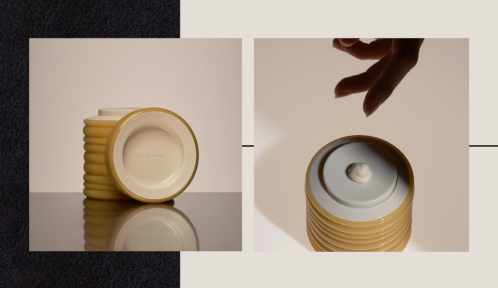Prebiotics and probiotics quickly transformed the way we view gut health, but a new member has entered the chat: their long-lost sibling, postbiotics. Prebiotics, probiotics, and postbiotics are the ‘power three’ of the gut world, as each one plays a different role in maintaining the health and balance of your microbiome.
Experts in This Article
registered dietitian and gut health expert
Postbiotics are still being heavily researched by nutritional scientists seeking to better understand their role in our gut and overall health. Here, Amanda Sauceda, MS, RD, a registered dietitian and gut health nutritionist, shares what we do know about postbiotics and identifies the key to reaping their gut-boosting benefits: eating more prebiotic-rich foods that are filled with fiber.
What are postbiotics?
The official definition of postbiotics continues to evolve as research develops, but there are three ways to define them. “Postbiotics can be part of a microbial cell, an inanimate bacteria, or compounds that are produced after your gut microbiota munches away on fibers,” Sauceda shares. “Postbiotics can also be the byproduct of what probiotics produce when eating away at different things, like prebiotics and fiber.” In other words, postbiotics are non-living microorganisms that can be naturally produced in the gut when eating prebiotic foods.
Postbiotics can have similar digestive perks as prebiotics and probiotics, but Sauceda emphasizes that more research has to be done to better understand their unique (and more specific) benefits. “A lot of the research points to the short-chain fatty acids [which are considered postbiotics] helping maintain a healthy gut lining and could be helpful for immunity,” Sauceda says. They’re also known for having anti-inflammatory, antioxidant, and anti-cancer properties that can help combat other health issues, one critical review points out.
The key to reaping the benefits of postbiotics from foods
So what is the key to benefiting from postbiotics? Sauceda recommends focusing on a variety of foods, with a special emphasis on prebiotic foods to support postbiotic production. “I always suggest eating plenty of colorful fruits and vegetables to help your gut produce postbiotics,” she adds. Implementing a variety of foods ensures you’re getting enough fiber through your diet, considering not all prebiotic foods offer significant sources of fiber.
When you focus on a small list of foods, it can become harder to add prebiotic foods to your diet due to accessibility constraints or your food preferences. For that reason, she suggests honoring your hunger cues and cultural influences when implementing new prebiotic foods into your diet.
To learn more about the gut-boosting benefits of prebiotics and probiotics according to an RD, watch this video:
Prebiotic foods that can help produce postbiotics
Prebiotic foods can support postbiotic production, but research has yet to indicate a quantifiable amount needed to reap their benefits. However, as Sauceda stated, adding a mix of prebiotic foods and fiber-rich foods can be a great start. Here is her list of prebiotic-rich foods she recommends adding to your diet.
- Asparagus: Asparagus is a great vegetable to add as a side or your favorite grain bowl for lunch.
- Garlic: Garlic can promote the growth of good bacteria in the gut (such as bifidobacteria) and add great flavor to any dish.
- Onions: Similar to garlic, you can add onions to any recipe to add flavor to your favorite dishes or add as a garnish.
- Bananas: Not only are bananas rich in vitamin C and B6, magnesium, and potassium but they’re also considered a great prebiotic food. Add bananas to your favorite smoothie, yogurt bowl, oatmeal, or eat alone as a snack.
- Chicory root: Chicory root is derived from a flowering plant in the dandelion family and is known for its coffee-like flavor. This can be used as a caffeine-free coffee replacement that offers prebiotic fiber.
- Dandelion greens: This vegetable is known for its coarsely toothed leaves, giving it the name “dent de lion” or lion’s teeth. The potent flavor of dandelion greens can be mellowed when cooked and serve as a good replacement for spinach.
- Jerusalem artichokes: Contrary to the name, Jerusalem artichokes are not related to regular artichokes and belong in the sunflower family. They act more like potatoes with a mild taste of artichoke hearts.
Other examples of prebiotic foods are leeks, barley, oats, cocoa, apples, nuts, flaxseed, seaweed, and pulses like legumes and chickpeas. But before going on a grocery trip, Sauceda advises zooming out of this list of foods and focusing on the big picture when focusing on gut health. Adding in a diverse group of foods, she says, can be more impactful on your gut health than a short list of foods, so it’s important to determine what’s best for you.
In fact, the American Gut Project—the largest study on the human microbiome—discovered participants who ate more than 30 different plant types per week had gut microbiomes that were more diverse than those who ate 10 or fewer types of plants. So while it may be tempting to focus on specific food groups, adding in more fiber-rich foods and prebiotic foods can be a great start.
“You’re going to be the one making the choices for what’s good for your body and what [you need] to meet your health goals,” Sauceda says. “We can get stuck eating and picking the same foods, so eating a variety of foods is a foundational thing that can support postbiotic production and improve your gut microbiome.” If you feel you’re unable to reap sufficient gut-boosting bacteria from foods, another option is to try out a science-backed probiotic supplement, like the new Synbiotic+ from Ritual which contains prebiotics, probiotics, and postbiotics to help keep you microbiome in check.
Oh hi! You look like someone who loves free workouts, discounts for cutting-edge wellness brands, and exclusive Well+Good content. Sign up for Well+, our online community of wellness insiders, and unlock your rewards instantly.
Sign Up for Our Daily Newsletter
Get all the latest in wellness, trends, food, fitness, beauty, and more delivered right to your inbox.
Got it, you've been added to our email list.











